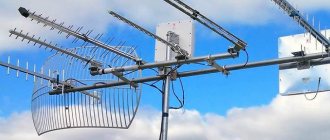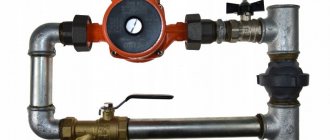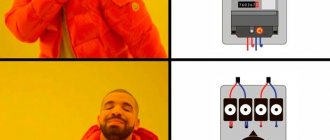Portable generators are used for a variety of applications, including power backup for the home, running power tools in the workplace, and more.
Some scenarios may require you to ground your portable generator, and knowing how to do this and what tools you'll need can save you from serious trouble.
In this article, we'll look at what grounding is, how to determine if a generator needs to be grounded, what tools you'll need, and the process for grounding a generator.
What is grounding?
Grounding refers to the connection of an electrical circuit to a reference ground.
In the case of a generator, its frame acts as an electrical circuit, and a properly installed ground rod acts as a reference ground.
Connecting a copper wire from your generator frame to a ground rod grounds the generator for safe operation.
An ungrounded generator may cause a fire in the event of a short circuit.
Do I need to ground my portable generator?
The easiest way to find out if your portable generator needs to be grounded is to check the manual and see if it needs to be grounded.
If a manual is not available, you can still do a few checks to ensure proper safety.
If your generator is a standalone system, you will need to use a ground rod.
Unless it is a separate derivative system, your generator does not need to be grounded.
To recognize a separately received system, simply check the alternator switch.
An undivided derivative system has a transfer switch that cannot be transferred to the neutral ground wire, meaning that it will not need to be connected to the ground rod.
Most portable generators have a fuel tank, motor and frame that are attached to the frame and therefore do not need to be grounded.
Tools Needed to Ground a Portable Generator
If you find yourself in a situation where you need to ground a generator, you want to make sure you have all the necessary tools for the job.
Although most tools can only be found in a workshop or store, getting ready at home can be a different story.
Use this quick checklist to stay prepared when you need to use your portable generator:
- Wire stripping kit
.In order to properly connect the copper wire to the copper rod and the generator, you need to strip the copper wire. A good wire stripping kit can help make the process cleaner, safer, and easier. In extreme cases, a knife or other sharp object will do.
- Solid Copper Ground Wire
Having enough copper wire will ensure that the wire can be connected to the generator and the copper ground rod with a little extra extra just in case.
- Meter Copper Ground Rod
The most important part of this process. Having the correct copper ground rod does everything in this procedure to ensure adequate grounding. You need to ensure that the copper ground rod is at least 1 meter long. You will also need to check how far it will need to be lowered into the ground.
- Hammer
To drive a copper rod into the ground for proper grounding, you will need a quality hammer, or sledgehammer. Just be careful not to damage the plating on the copper rod, as this may result in a poor connection.
- Pliers
To wrap the copper wire tightly around the ground rod, a good set of pliers will definitely help and improve the connection.
- Wrench
When connecting the copper wire to the alternator, a wrench will be used to loosen the bolt on the alternator for proper connection.
Additional tools/consumables
- Water – In the case of hard ground, water to help soften the ground can be very helpful and save you time.
- Screwdriver - A Phillips head screwdriver can be helpful in removing a ground bolt that is rounded or does not have a hex head.
- Shovel - If you are trying to drive a copper rod into rocky terrain, you can use a shovel to dig the rod in instead.
How do I ground my generator?
1. Install the copper ground rod
Using a hammer or sledgehammer, drive the copper ground rod into the ground at least 2.5 meters for proper grounding.
If the soil is hard, you can use water to soften it.
2. Strip and connect the copper wire to the copper rod.
Once the 1.5 meter ground rod has been installed correctly, it is time to move on to connecting the copper wire.
Using a wire stripper, carefully strip the copper wire and wrap it tightly around the copper ground rod with pliers.
3. Generator grounding
Once you've finished stripping and connecting the copper wire to the ground rod, it's time to connect it to the generator.
Carefully strip the other side of the copper wire to prepare it for connection.
Locate the ground bolt on your alternator and loosen it enough to wrap the stripped wire around it.
Wrap the stripped wire tightly around the bolt and tighten it for a tight, secure connection.
Finally
Grounding your generator is a very important part of properly setting up and using your portable generator (if it requires grounding).
This reduces the likelihood of any malfunctions and ensures the safety of you and your appliances (including the generator).
Even if your generator does not require grounding, knowing how to properly ground a generator can help keep others safe. We hope this article was useful and informative for you.
Installation Tips
Follow these tips if you want to use the changeover switch in your housing safely:
- The device can only be installed indoors.
- The device must be moisture-resistant and resistant to natural precipitation.
- The device can be operated at temperatures ranging from -40 to +55°C.
- If the top of the contact knife is burnt, you need to clean it with a file.
- The fastening of the switch must be reliable and durable.
Where is the phase and where is the zero at the generator output
Many who have purchased and use a gasoline generator encounter problems with the operation of devices connected to it. For example, a gas boiler from a generator refuses to start, and problems begin to arise in the operation of other appliances.
Also, some people are perplexed that the output of the generator, if checked with an indicator, shows two phases at once. And no matter how much you poke the generator socket with a probe, the phase will glow in both one and the other hole.
This article will tell you whether the generator has a zero, why the indicator shows two phases, and how to make a zero yourself so that the gas boiler starts. The article is intended primarily for beginners. This is informational material that does not oblige you to anything.
You should always remember that any interference with the operation of the generator entails not only the manufacturer’s denial of warranty obligations, but also the risk of electric shock.
Connection diagram for a pass-through switch from two places
This scheme is convenient in a two-story house on the stairs, in a passage room, in a long corridor. You can also use it in the bedroom - turn off the overhead light at the entrance and near the bed (how many times did you have to get up to turn it on/off?).
Electrical diagram for switching on a pass-through switch from 2 places
Zero and ground (if any) are connected directly to the lamp. The phase is supplied to the output of the first switch, the input of the second is connected to the free wire of the lamp, the outputs of the two devices are connected to each other.
Looking at this diagram, it is easy to understand how the pass-through switch works. In the position shown in the figure, the lamp is on. By pressing the key of any of the devices, we break the chain. In the same way, when in the off position, by moving any of them to another position, we will close the circuit through one of the jumpers and the lamp will light up.
To make it clearer what to connect to what, and how to lay the wires, here are a few images.
Connecting wires on a pass-through switch
If we talk about the room, then you need to lay the wires approximately as in the photo below. According to modern rules, all of them should be located at a distance of 15 cm from the ceiling. They can be placed in mounting boxes or trays; the ends of the wires are inserted into mounting boxes. This is convenient: if necessary, you can replace a broken wire. Also, according to the latest standards, all connections occur only in installation boxes and using contactors. If you make twists, it is better to solder them and wrap them well with electrical tape on top.
The return wire of the lamp is connected to the output of the second switch. White indicates the wires connecting the outputs of both devices.
How to route wires around the room
How to connect everything in the terminal box is described in the video.
Where is the phase and where is the zero for the generator?
So, attention, for those who do not yet know where the generator output zero is and where the phase is. There is no zero at the output of the generator, this is how it is designed and works. It is for this reason that we can observe unpleasant flickering of lamps when operating from a generator, and also encounter various other problems when connecting phase-dependent devices.
Such devices need zero and phase to operate. Moreover, one of the cable terminals must be connected strictly to the phase, and not vice versa. But if the generators do not have zero, and only two phases, what to do and what can be done?
Difference between single and three phase connection
All connections, whether in a single-phase or a three-phase network, are made completely identical, with the exception of the number of power wires. The only important nuance concerns the so-called control phase - if you connect the starter to the network, then its main contacts connect and disconnect the power wires from the network, and the power for the electromagnetic coil must also be taken from somewhere.
In a single-phase network there are no problems - there is only one phase and such a question simply does not exist, but in a three-phase network everything is somewhat more complicated - there are L1, L2 and L3. Without going into technical details, there is only one answer - for control circuits you can use any of the phases, but only one. That is, if the KM1 coil is powered from phase L3, then the control of the remaining starters, the “Start” and “Stop” buttons must also be “hung” only on it.
This is not difficult to do - just note what color the wire is on the desired phase, and if the cable has single-color conductors, then stick or draw markers on them.
Is it necessary to ground the generator zero and how to do it
On the forums, many argue that it is necessary to ground one of the generator terminals in order to get a full zero. Thus, the so-called phase-dependent technology will work, and other problems during the operation of the generator will disappear, for example, the unpleasant flickering of lighting lamps.
I’ll say right away that I haven’t done that and I don’t intend to do that yet. All that I did when installing the generator and when connecting it was grounding the housing. Unfortunately, with the usual grounding of the generator housing, the working zero did not appear in one of the terminals.
For those who have difficulty starting gas boilers from a generator, many advise using a UPS and other similar devices. I’ll make a reservation right away and say that when purchasing a stabilizer for a boiler or UPS, it is better to consult with specialists in advance to determine whether these devices will operate from autonomous power sources, in particular from gasoline generators.
Pass-through switches always work in pairs
Now take a look at the third option, which shows how pass-through switches should actually be used
Please note that there are two wires between the control points. And this is a big minus for those who hoped to somehow use old veins lying in the thickness of the walls for control.
Look, now you can see that the neutral (black wire) goes straight to the chandelier. But the neutral can be broken or connected at any time from both ends of the corridor. In this case, there is always a phase on one of the wires, and you just need to apply it to the desired point. Due to this, the whole problem is solved.
Now we leave the bedroom, turn on the light, get to the threshold of the kitchen, and turn off the chandelier. By the way, if someone wants to join night gatherings, they will solve their problems in exactly the same manner without any difficulty. But what if we need to place another switch - say - near the front door?
Do I need to ground the generator housing?
In fact, you don’t have to ground the generator; nothing bad will happen. But since generator manufacturers insistently ask to do this in order to avoid equipment failure and failure, it is better to ground the generator frame.
Grounding the generator is very simple. To do this, several corners (2-3 pieces) are driven into the ground. The length of the corners should be about one meter. Exactly the same distance is maintained between the corners.
Then the corners are connected to each other with a metal strip or fittings, from which it is then necessary to make a branch to the generator. Only after this is a separate grounding cable pulled to the generator housing.
As a rule, a special connector or contact for grounding is already provided on the generator housing.
Changeover switch principle of operation
An electrical type device that serves to disconnect an electrical load from one energy source and connect it to another source is called a changeover switch, or a changeover type switch (switch with a midpoint). The devices are available with or without arc arresters. In the first case, network switching can occur with a fully connected load. In the second - only when it is turned off.
The switch is operated manually, that is, if it is necessary to switch power sources, the operator acts on the isolated control lever of the switch. There are also automatic switching systems.
Part I. Connecting the generator to the network of a country house (220V/380V). How not to do it
Home » Uninterruptible power supply to homes » Part I. Connecting the generator to the network of a country house (220V/380V).
What not to do Published by the author Sergey Lednev - Uninterrupted power supply to homes - December 3, 2016
The standard task of providing uninterrupted power to a home from a generator is fraught with many pitfalls and nuances.
An Internet search on the relevant topic reveals many links to articles and videos, most of which, unfortunately, are written and filmed with an amateurish approach. The implementation of these schemes can lead to serious problems, ranging from burnt equipment to electrical injuries. In this part we will figure out what not to do.
Choice
The buyer must determine from the very beginning which technical parameters are the most important for him. It is worth taking a closer look at these indicators:
- Weight.
- Dimensions.
- Power.
- Fuel consumption.
- Noise level.
- Duration of work.
Automation and price are parameters that are also being looked at
This is important for those who are interested in how to connect a generator to the home network, the diagram of which is posted on specialized websites
Generator operation
By parameters
Many people first look for an answer to the question of how many phases a generator should have for maximum convenient operation. To do this, you need to understand what electrical appliances will be connected. Three-phase options allow connection to both single- and three-phase devices. Single-phase ones are combined with only one type of consumer. But this does not mean that models with more phases will be better under all circumstances.
At each phase, the maximum load should be no more than 30%. This means that in reality the owners will not be able to use more than a third of the rated power that the outlet initially has. For example, the rated power of a three-phase generator is 6 kW. This means that no more than 2 kW can be removed from a regular 220 V outlet. The load still needs to be distributed over several phases when connecting a single-phase generator to a three-phase network at home.
Note! For power, they also check the parameters of the devices that are planned to be connected
It is important to have a reserve of at least 20-30%. Otherwise, you may encounter problems such as overload and work stoppage. Too much fuel will also be consumed
Too much fuel will also be consumed
Otherwise, you may encounter problems such as overload and work stoppage. Too much fuel will also be consumed.
Type
Synchronous and asynchronous types of devices are available. The choice involves a careful study of the characteristics of each of the existing models.
Asynchronous
Their main problem is their inability to handle so-called peak loads. Although these devices can also be used to maintain normal voltage readings. They are suitable for joint use with equipment sensitive to voltage surges:
- Electronic devices.
- Computer Engineering.
- Medical devices supporting gasoline generators.
Residual magnetization of the rotor is the main source of energy for such devices. Therefore, the service life of asynchronous generators is longer than that of their closest analogues. They do not require the use of cooling systems; the unit housing is completely closed. Thanks to this, protection from dust and moisture is fully guaranteed.
Interesting! The asynchronous generator is immune to short circuits. Therefore, this energy source is the optimal solution for welding machines. But such devices can be very sensitive to overloads. Therefore, it is prohibited to connect them to devices with initially high inrush currents.
Synchronous
The quality of the current in this case is lower when compared with the previous option. Suitable for providing emergency power in various circumstances:
- Offices.
- Refrigeration units.
- Electrical equipment in dachas and country houses.
- Construction projects.
Such devices also have some positive qualities:
- Resistance to short-term overloads.
- Ability to normally withstand peak loads, including mechanical loads.
But protection from moisture, dust and dirt is worse than that of asynchronous structures. After all, in order to cool, such generators need to pass a certain amount of air through themselves. A synchronous generator will be needed if devices operating with reactive loads are used. Then the power will be less.
Changeover switches
Phasing
It has already been mentioned above. It is worth buying three-phase generators only if there is a consumer with the appropriate characteristics in the house. If all the devices are single-phase, then the generator is selected of this type. This even applies to situations where there is a three-phase network connected to the house.
Network connection
Absolutely not
- Connect the generator through a regular house socket using a plug-plug wire, turning off the input circuit breaker. Why? We answer:
- The power of the most popular generators for private homes usually ranges from 5-6.5 kW. A household socket, if installed correctly, can hold a load of up to 16A (~3.5 kW), and if installed incorrectly (non-GOST wire, cross-section less than 2.5 sq. cm., Chinese socket, weak contact connections, etc.) 10A or less . When the load increases, a fire hazard arises.
- According to GOST (12.2.007.0-75 clause 3.1.7), the presence of uninsulated live parts in electrical installations is not allowed, and when using a plug-to-plug connection, we have the possibility of dangerous voltage on one of the plugs.
- This circuit allows for the mechanical possibility of supplying counter voltage to the generator, which will lead to its failure. This is possible if, while the generator is running, one of the household members turns on the input circuit breaker, knowing that there is voltage from the network.
- It is prohibited to connect the generator through a distribution board using a switching circuit on automatic machines. Let's look at an example that we encountered in practice:
Incorrect generator connection diagram
Let's omit comments on the build quality of this shield. Why is such a scheme dangerous? When two machines are turned on simultaneously (in this case, “Input” and “External Rose and Generator” at the bottom left), we receive counter voltage on the generator line, which leads to its failure. A family member uninitiated in the scheme or the owner of the house who is thinking about the meaning of life can turn on two machines at once. It is necessary to use three-position reversing switches I-0-II (for example, ABB OT40F3C)
- It is strictly forbidden to connect one of the generator outputs to a common neutral bus unless the neutral is re-grounded in the main panel (TT circuit) and/or on a pole and/or in the metering cabinet. Such grounding, as a rule, is absent in old SNT or in villages where the norms for laying power lines are violated. By violating this rule, we transfer dangerous half-phase voltage from the output of our generator to the “public” neutral. This can lead to electrical injuries to your neighbors and electricians working on the line. How to determine if there is re-grounding? The neutral is grounded either at the top of the pole through the reinforcement terminal, or on a steel strip that runs along the pole and goes into the ground. One example of a circuit with grounding of the neutral on a pole and organization of grounding according to the TN-CS scheme
Grounding the neutral in the ASU
Correct connection of a rocker switch to organize three lighting control points
In this case, two single-key pass-through switches are combined with a changeover switch. And this is what it gives. As before, in the picture we used two colors. Imagine that the phase is now in blue. As shown in the picture. Now it's time to go visit. And we turn off the light with one movement of the rocker switch. Isn't that great?
All other options work similarly. Now the light in the corridor can be turned on and off from any of three points. Be it the front door, the kitchen threshold or the exit from the bedroom. Moreover, changeover switches can be arranged in garlands. But they all turn towards each other.
Thus we get the second rule. It applies to both changeover and pass-through switches: the switches are turned on in the opposite direction.
We believe that there is no need to explain these words. They can be clearly seen in the first figure, where the pass-through switches are located sideways to each other. The second one looks outward, that is, towards the power supply and the light bulb in the chandelier.
We do not recommend:
- Ground one of the generator outputs to the common house PE bus (ground). If your ground “falls off” (a wire rots or a connection comes loose), dangerous voltage will appear on all grounded appliances in your home.
- Connect budget generators directly to the load without using network interference filters. Changing the generator speed causes strong interference and voltage surges, which are dangerous for sensitive electronic equipment (automatic gas boilers, expensive household appliances).
- Use three-phase generators with a power of up to 10 kW for backup power at home. Phase imbalance will lead to rapid failure of the generator. Use single-phase generators with a phase combination circuit.
- Connect inverter generators to a common neutral bus. This can lead to rapid generator failure.
- Neglect the rule of grounding the generator housing itself.
- Use a non-inverter generator without a solidly grounded neutral of one of its outputs, because this leads to incorrect operation of differential protection devices (RCDs) and errors in the operation of phase-dependent boilers.
- Use the generator output for grounding, which is turned off by a single-pole circuit breaker on its body.
We’ll talk about how to properly connect a generator to the network (220/380V) of a country house later.
Ask your questions in the comments!
about the author
Sergey Lednev
Manager of complex projects for stable and uninterruptible power supply.
Changeover type circuit breaker
All the changeover switches presented above have one drawback - they require the presence of a person to manipulate the switching circuits. This is inconvenient, especially when the central power supply is lost frequently and unpredictably. Therefore, a changeover circuit breaker was developed. More precisely, this is a whole block called automatic transfer of reserve (ATS).
ATS is a complex design, but craftsmen assemble such systems from relatively inexpensive relay devices (contactors). Models with normally closed and open contacts are used for this.
When using a homemade changeover switch, the connection diagram works according to a certain principle. For example, if there is central supply electricity in the line, then a relay with normally open contacts closes the circuit with the load. The relay with normally closed contacts, where the generator is connected, is open in this case. As soon as the current is lost, the combination is reversed and the network begins to power the generator.
Getting a clean “0” from a gas generator
Page 1 of 3
1 2 3 Next >
- Registration: 12/20/11 Messages: 1 Thanks: 0
zagoveev
Newbie
Registration: 12/20/11 Messages: 1 Thanks: 0 Address: Moscow
Getting a clean “0” from a gas generator
Help me get a clean “0” from a gas generator to connect a gas boiler.
- Registration: 04/03/11 Messages: 333 Thanks: 188
130
Participant
Registration: 04/03/11 Messages: 333 Thanks: 188 Address: Moskovskaya Sloboda village
It didn't work out for me either. get zero from the gas generator.
- Registration: 04/02/10 Messages: 1,489 Thanks: 481
Daemon
I learn new things all the time
Registration: 04/02/10 Messages: 1,489 Thanks: 481 Address: Khotkovo
Ground any wire from the gene and get zero, for normal flame control, this is exactly what I did, everything works fine.
- Registration: 06/14/10 Messages: 6,103 Thanks: 5,206
olegaa2
Live here
Registration: 06/14/10 Messages: 6,103 Thanks: 5,206 Address: Penza
Here is a working scheme -
Characteristics
The main characteristics of the changeover switch are:
- The rated current it can carry. The devices are produced at 15.0, 25.0, 32.0, 40.0, 63.0, 80.0, 100.0 and 125.0 A.
- Thermal current that does not destroy elements.
- Permissible mains voltage.
- Short-term impulse voltage that the insulation can withstand.
- The number of poles that a changeover switch can simultaneously switch.
- The wear resistance of electrical contacts is determined by the operating voltage and the amount of current passed.
- The wear resistance of mechanical elements is determined by the number of switching cycles.
Switch design options
The device can provide power flow to one common segment or to two flows.
Single pole option
This device system is very common. Works on one module, has copper conductors. They are used in tandem with generators with operating frequency parameters of more than 20 Hz.
These switches are characterized by a load of up to 200 A, so they are usually not used in rooms with people.
Two-pole option
Such devices are used in buildings where there is a population. Options for using the device for different power systems are allowed. The resistance here is 60 ohms. The output voltage depends on the type of unit.











